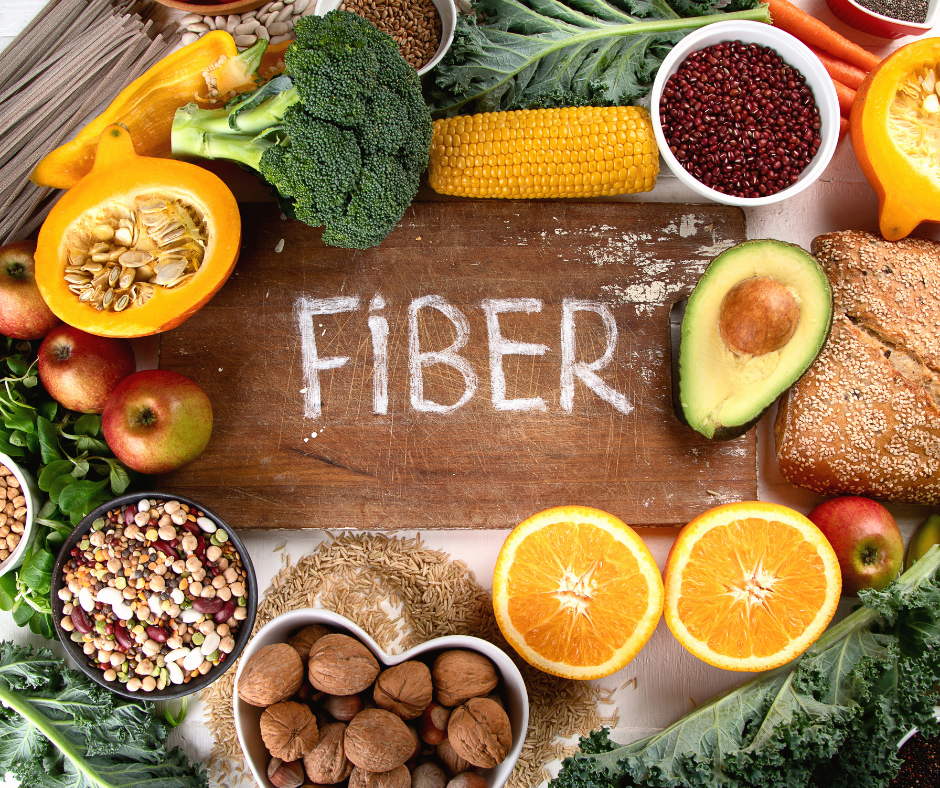Fiber is a type of carbohydrate that the body cannot digest, yet it plays a crucial role in maintaining a healthy digestive system and overall health. Fiber can be found in both plant-based and animal-based foods, and is essential in promoting regularity, maintaining a healthy weight, and reducing the risk of chronic diseases. Below, we will explore the 5 key health benefits of fiber, the difference between soluble and insoluble fiber, and 10 foods high in fiber.
 1. Promotes Regularity: Fiber helps to prevent constipation by adding bulk to the stool, making it easier to pass through the digestive system. Insoluble fiber, in particular, adds bulk to the stool and helps to regulate the transit time of the food through the digestive system.
1. Promotes Regularity: Fiber helps to prevent constipation by adding bulk to the stool, making it easier to pass through the digestive system. Insoluble fiber, in particular, adds bulk to the stool and helps to regulate the transit time of the food through the digestive system.
2. Maintains a Healthy Weight: High-fiber foods are often more filling than low-fiber foods, which can help with weight management. Fiber slows down the digestive process, keeping you feeling full for longer. In addition, fiber-rich foods are often less energy-dense, which means they contain fewer calories per gram.
3. Reduces the Risk of Chronic Diseases: A diet high in fiber has been linked to a reduced risk of several chronic diseases, including heart disease, type 2 diabetes, and certain types of cancer. Fiber helps to regulate blood sugar levels and lower cholesterol, which can help to prevent the development of these diseases.
4. Supports Digestive Health: Fiber acts as a prebiotic, which helps to nourish the beneficial bacteria in the gut. This, in turn, can improve the overall health of the digestive system, including reducing the risk of conditions such as irritable bowel syndrome (IBS) and inflammatory bowel disease (IBD).
5. Lowers Blood Pressure: Soluble fiber has been shown to lower blood pressure by helping to regulate blood sugar levels and reducing inflammation in the body. By adding fiber-rich foods to your diet, you can help to lower your risk of developing high blood pressure and related health problems.
It is important to note that there are two types of fiber: soluble and insoluble. Soluble fiber dissolves in water and forms a gel-like substance that slows down the digestive process. Foods high in soluble fiber include oats, barley, fruits, and vegetables. Insoluble fiber, on the other hand, does not dissolve in water and adds bulk to the stool to promote regularity. Foods high in insoluble fiber include wheat bran, nuts, and seeds.

Unfortunately, the average American diet does not include enough fiber, with only 5% of adults meeting the recommended daily intake. Common symptoms of a lack of fiber in the diet include constipation, bloating, and gas. In addition, a low-fiber diet can increase the risk of developing chronic diseases.
So, what foods are high in fiber? Here are 10 foods that you can easily add to your diet to increase your fiber intake:
1. Lentils (16 grams of fiber per cup)
2. Artichokes (10 grams of fiber per medium artichoke)
3. Black beans (15 grams of fiber per cup)
4. Chia seeds (10 grams of fiber per 2 tablespoons)
5. Raspberries (8 grams of fiber per cup)
6. Avocados (10 grams of fiber per medium avocado)
7. Sweet potatoes (4 grams of fiber per medium sweet potato)
8. Almonds (4 grams of fiber per 1/4 cup)
9. Popcorn (4 grams of fiber per 3 cups)
10. Pears (5 grams of fiber per medium pear)
Adding these foods to your can go a long way in helping us to stay healthier longer.


Comments ()